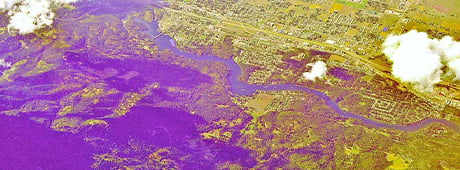No products in the cart.
Post Falls—Spotlight City

A Stroll from Then to Now
By Mike Blackbird
IDAHO magazine first featured Post Falls as a Spotlight City in our April 2003 issue. Since then, the town has undergone big developments. Here’s a look at its past, the present, and what the future may hold.
One of my favorite walks along part of the Centennial Trail amounts to a stroll through the rich history of Post Falls. A sixty-mile portion of the trail follows the old interurban electric train route that winds from Spokane through Post Falls and eastward to Higgens Point on the shore of Lake Coeur d’Alene.
On a warm day in early spring, I drive to Falls Park and begin my walk west on the Centennial Trail. I’m greeted by the first hints of spring: buttercups and blue-eyed grass. Soon a vista opens up of the iconic Post Falls Spokane River Bridge built by Washington Water Power (WWP). Just beyond it, the spring runoff thunders over the Post Falls North Dam as it flows through the deep gorge that the river has carved over the centuries.
Post Falls, twenty-eight miles from Spokane on I-90 and seven miles from Coeur d’Alene, was once just a wide spot in the road but today is embracing its own history, heritage, and identity.
It has been called the state’s River City, not only because of its close historical ties to the Spokane River but also because of its several parks that border the river, among them Falls Park, Black Bay, Q’emlin River Park, Corbin Park, and the newest one, Landing Park. Kiwanis Park is not a city park but it’s shared by the community and is frequented by moose, who swim the river to graze on the park’s foliage.
Falls Park is between the Centennial Trail on the north and the dam on the south. Up the ridge on my right and out of sight, I hear the muttering of traffic along I-90. On my left, the trail follows parallel to the river close by.
I reach railroad tracks and take a detour north along them to Treaty Rock. Listed on the National Register of Historic Places, this is a pictograph/deed painted on a granite wall. The story behind it goes back to 1859, when Captain John Mullan was charged by Washington Territory Governor Isaac Stevens to build a military road from Walla Walla, Washington, to Fort Benton, Montana. Along the route, he encountered a falls below Spokane Falls, which he named Little Falls.
This content is available for purchase. Please select from available options.
Register & Purchase Purchase Only
Register & Purchase Purchase Only

